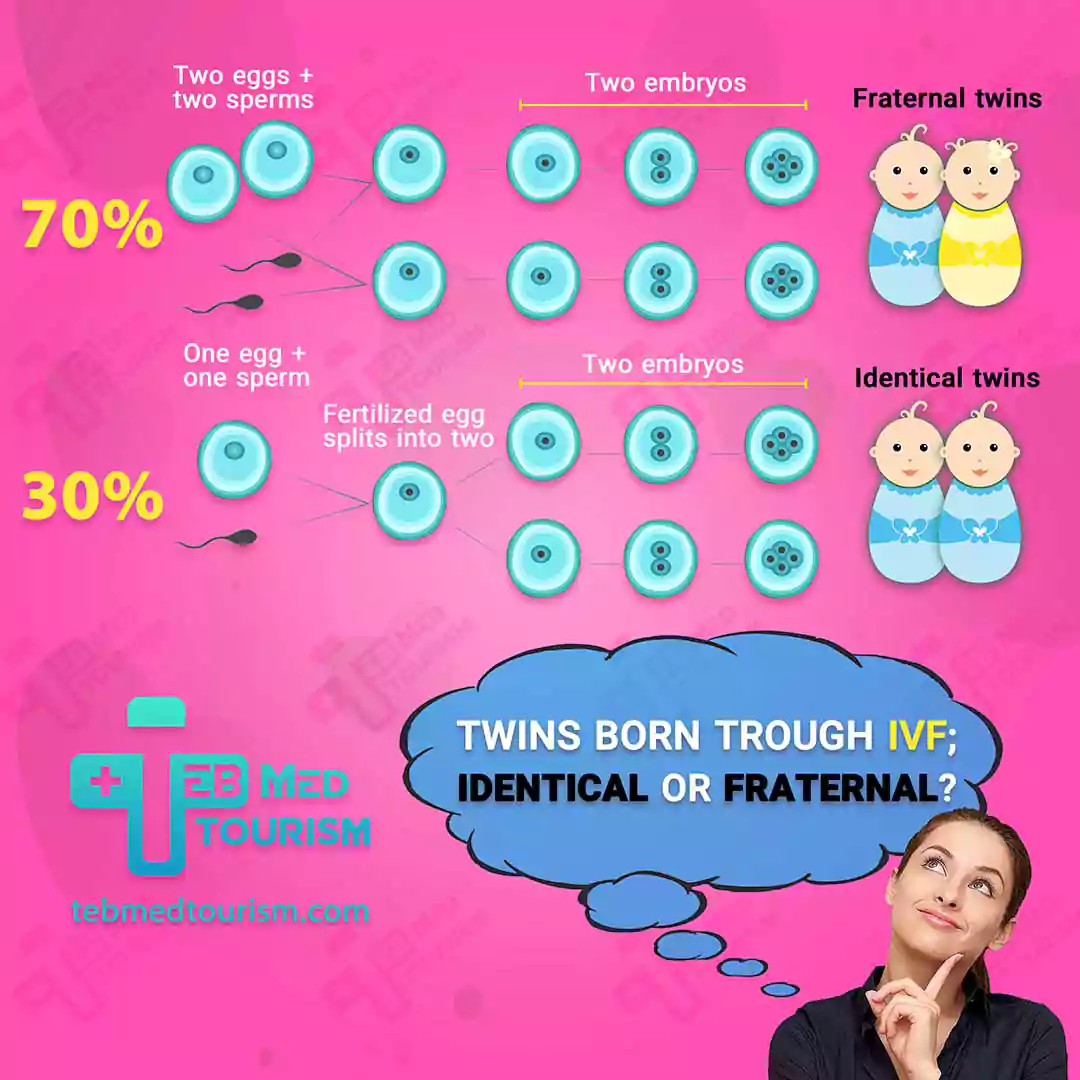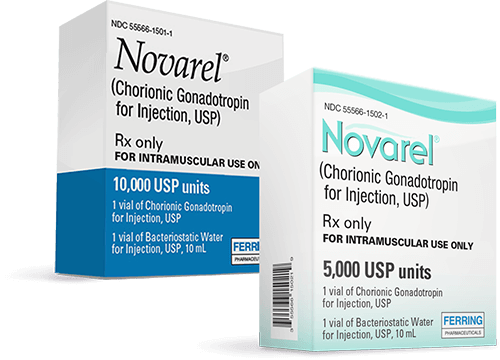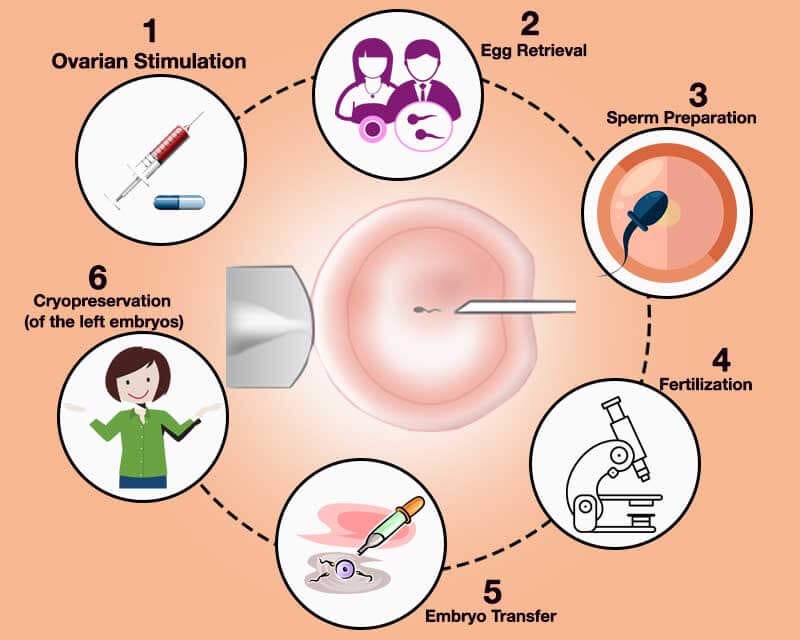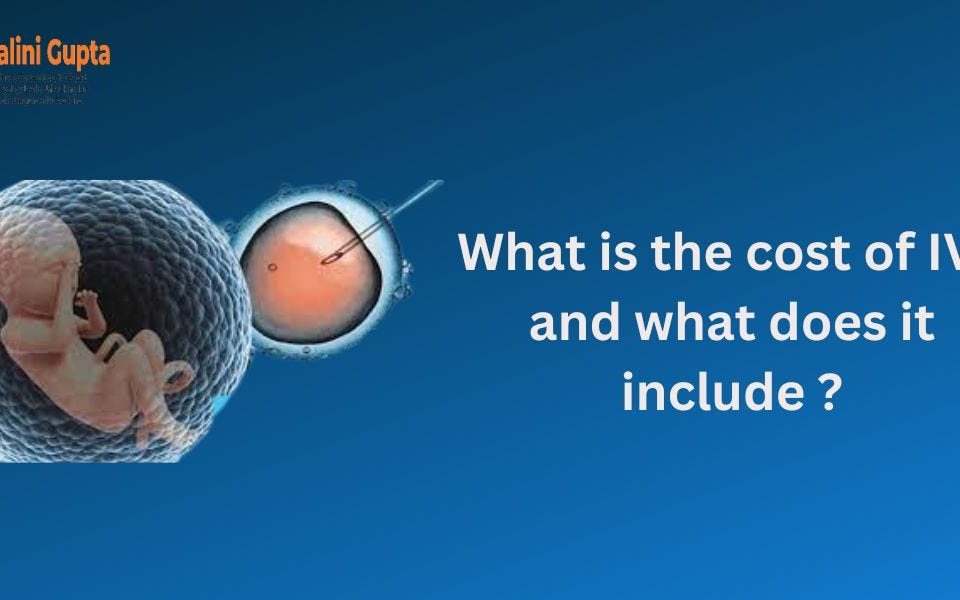
What Is the Process of IVF? A Step-by-Step Guide to Your Fertility Journey
April 25, 2025
Will I Miscarry If I Stop Taking Progesterone After IVF?
April 26, 2025Can You Pick the Gender with IVF?
When you’re dreaming about starting a family, you might find yourself wondering about the little details—like whether you’ll have a boy or a girl. For some, it’s just a fun thought to toss around. For others, it’s a big deal, maybe because of family traditions, medical reasons, or simply wanting to balance out the crew at home. Thanks to modern science, in vitro fertilization (IVF) has made it possible to not just hope for a certain gender but actually choose it. So, can you pick the gender with IVF? The short answer is yes—but there’s a lot more to the story.
IVF isn’t just about helping people have babies when nature needs a nudge. It’s also a window into possibilities that were pure sci-fi a few decades ago. With tools like preimplantation genetic testing (PGT), you can peek at an embryo’s DNA before it’s even placed in the womb. That includes finding out if it’s got XX chromosomes for a girl or XY for a boy. But before you start picturing a baby-ordering menu, let’s dive into how this works, what it means, and whether it’s right for you.
How Does Gender Selection with IVF Actually Work?
IVF is like a carefully choreographed dance between science and biology. It starts with stimulating the ovaries to produce multiple eggs, collecting those eggs, fertilizing them with sperm in a lab, and then growing the resulting embryos for a few days. But here’s where the gender selection magic happens: a step called preimplantation genetic testing, or PGT.
PGT is a high-tech process where a few cells are gently taken from each embryo—usually when it’s about five days old and at the blastocyst stage. Those cells get analyzed in a lab to check the chromosomes. If the embryo has two X chromosomes (XX), it’s female. If it’s got an X and a Y (XY), it’s male. Once the results are in, you and your doctor can decide which embryo to transfer into the uterus based on the gender you’re hoping for.
This isn’t guesswork. Studies show PGT is nearly 100% accurate for determining an embryo’s sex. A 2021 study of over 2,800 women using IVF found that when PGT was used for gender selection, the success rate of getting the desired sex was spot-on in almost every case. That’s pretty incredible when you think about it—science giving you a say in something that used to be left to chance.
But it’s not as simple as snapping your fingers. IVF with PGT takes time, money, and a team of experts. Plus, you need healthy embryos of the gender you want, which isn’t always guaranteed. Age, egg quality, and sperm health all play a role in whether you’ll have options to choose from.
Why Would Someone Want to Pick Their Baby’s Gender?
People choose gender selection for all kinds of reasons, and no two stories are exactly alike. Maybe you’ve got three boys at home and are dreaming of a little girl to round things out. Or perhaps there’s a genetic condition in your family that only affects one sex, and you want to avoid passing it on. Whatever the reason, it’s a deeply personal choice.
Medical Reasons: Avoiding Genetic Risks
Some families turn to gender selection because of health concerns. Take X-linked disorders like hemophilia or Duchenne muscular dystrophy—these conditions are tied to the X chromosome and mostly affect boys. If a mom carries the gene, there’s a 50% chance her son could inherit it, while her daughters would likely just be carriers. By choosing a female embryo, parents can sidestep that risk entirely. It’s not about preference; it’s about giving their child the best shot at a healthy life.
Family Balancing: A Personal Dream
Then there’s “family balancing,” a term you’ll hear a lot in fertility clinics. Imagine a couple with two daughters who’ve always pictured a son joining the mix. IVF with PGT lets them make that happen. It’s not about loving one gender more—it’s about creating the family they’ve envisioned. In the U.S., this is totally legal, and clinics see it all the time. In fact, a 2018 report found that about 7% of IVF cycles with PGT were specifically for elective gender selection.
Cultural or Emotional Ties
In some cases, it’s about tradition or healing. Maybe a family lost a child and wants to honor that memory with another of the same gender. Or perhaps cultural values lean toward having a boy or girl first. These choices can feel like a way to connect with something bigger than themselves.
What’s your take? Quick Poll: If you could pick your baby’s gender, would you do it for medical reasons, family balancing, or just because? Drop your thoughts in the comments—I’d love to hear!
The Step-by-Step Process: What to Expect
If you’re thinking about gender selection with IVF, it helps to know what you’re signing up for. Here’s a breakdown of the journey, from start to finish.
Step 1: Ovarian Stimulation
First, you’ll take hormone meds for about 10-14 days to get your ovaries to produce multiple eggs. Normally, your body releases just one egg a month, but IVF cranks that up to give you more chances.
Step 2: Egg Retrieval
Once those eggs are ready, a doctor uses a tiny needle to collect them from your ovaries. It’s a quick procedure done under sedation, so you won’t feel a thing. Meanwhile, sperm is collected (or thawed if you’re using a donor).
Step 3: Fertilization and Embryo Growth
In the lab, eggs and sperm meet up to create embryos. These little bundles of potential grow for about five days until they’re blastocysts—strong enough for the next step.
Step 4: Preimplantation Genetic Testing (PGT)
Here’s the big moment. A few cells are biopsied from each embryo and sent off for testing. In a couple of days, you’ll get a report showing which embryos are XX or XY, plus info on their genetic health.
Step 5: Embryo Transfer
You pick the embryo (or embryos) you want—based on gender and health—and the doctor places it into your uterus. If all goes well, it implants, and you’re on your way to pregnancy.
Step 6: Waiting Game
About 10-14 days later, a pregnancy test tells you if it worked. If it did, congrats! If not, you might try again with any frozen embryos you’ve got left.
✔️ Pro Tip: Ask your clinic about freezing extra embryos. It gives you backup options without starting from scratch.
Is Gender Selection with IVF Foolproof?
PGT is a rockstar at figuring out an embryo’s sex—nearly 100% accurate, as we mentioned. But that doesn’t mean everything’s guaranteed. IVF itself isn’t a sure thing. Only about 30-40% of embryo transfers lead to a live birth, depending on factors like age and embryo quality. And here’s the kicker: you might not get an embryo of the gender you want.
Let’s say you’re 38, and your egg supply is lower than it used to be. You might only get a handful of embryos, and they could all be the same sex—maybe not the one you had in mind. In a 2022 study, researchers found that women over 35 were less likely to have a balanced mix of male and female embryos, just because of natural declines in egg quality. If that happens, you’ve got options like using donor eggs or sperm, but it’s something to think about upfront.
❌ Heads-Up: Don’t assume you’ll have tons of embryos to pick from. Talk to your doctor about your odds based on your age and health.
The Cost Factor: How Much Are We Talking?
IVF isn’t cheap, and adding gender selection bumps up the bill. In the U.S., a basic IVF cycle runs about $12,000-$15,000, not counting meds (another $3,000-$5,000). PGT tacks on $2,000-$4,500, depending on how many embryos you test. So, you’re looking at $17,000-$25,000 total for one shot at picking your baby’s gender.
Here’s a quick cost breakdown:
| Service | Average Cost |
|---|---|
| IVF Cycle | $12,000 – $15,000 |
| Medications | $3,000 – $5,000 |
| PGT (Gender Testing) | $2,000 – $4,500 |
| Total | $17,000 – $25,000 |
Some clinics offer package deals, and insurance might cover part of it if there’s a medical reason (like avoiding a genetic disease). But for family balancing? You’re usually paying out of pocket. Compare that to places like Iran, where PGT costs around $3,000 on top of a cheaper IVF cycle—travel might even save you money if you’re up for it.
✔️ Money-Saving Tip: Look into fertility clinics with financing plans or ask about discounts for multiple cycles.
The Ethics Debate: Should You Even Do This?
Gender selection stirs up big questions. Is it okay to play “designer baby” with nature? Some folks worry it could lead to a slippery slope—picking eye color or height next. Others say it’s your right to choose, especially if it’s about health or family balance.
In the U.S., it’s legal, and the American Society for Reproductive Medicine (ASRM) says it’s fine for medical reasons but gets cautious about non-medical ones. They’re not against it, but they warn about reinforcing gender stereotypes—like if They point out that in places like China and India, where sex selection is banned, skewed birth ratios (more boys than girls) have caused social headaches. Yet, a 2022 ASRM report found no big imbalance in the U.S., even with PGT on the rise.
On X, people are buzzing about it too. Posts from 2025 show a mix of excitement (“You can pick your baby’s gender now—wild!”) and unease (“This feels like we’re messing with fate”). What do you think? Mini Quiz: Would you feel comfy picking your baby’s gender, or does it cross a line for you? Share below!
Three Things You Haven’t Heard About Gender Selection
Most articles stick to the basics—how it works, costs, ethics. But there’s more to explore. Here are three angles that don’t get enough airtime.
1. The Emotional Rollercoaster
Picking a gender sounds empowering, but it can mess with your head. What if you only get embryos of the “wrong” sex? One mom I read about had her heart set on a girl after two boys. Her IVF cycle gave her five healthy embryos—all male. She went through with it but admitted feeling torn—like she was rejecting perfectly good embryos over something she couldn’t control. Clinics don’t always prep you for that guilt trip.
✔️ Coping Tip: Talk to a counselor who gets fertility stuff. They can help you process the feels before you decide.
2. The Frozen Embryo Dilemma
Say you get your girl embryo and have a few boys left over. What then? Freezing them costs about $500-$1,000 a year. Donating them to research or another family is an option, but it’s a tough call. A 2023 survey of 200 IVF patients found 40% struggled with what to do with “extra” embryos—especially when gender was a factor in their choice. It’s not just logistics; it’s emotional baggage.
✔️ Action Step: Decide your plan for unused embryos upfront. It’ll save you stress later.
3. The Science of Sex Ratios
Here’s a wild stat: IVF with PGT tends to produce more boys than girls—164 males for every 100 females, per a 2022 study. Why? Some think male embryos grow faster in the lab, making them look “healthier” for transfer. Others say it’s random. Either way, if you’re set on a girl, you might have fewer options than you expect.
✔️ Smart Move: Ask your embryologist about your batch’s sex ratio early on. It could shape your next steps.

Busting Myths: What’s True and What’s Not?
There’s a lot of noise out there about gender selection. Let’s clear up a few big ones.
❌ Myth: You can pick gender without IVF.
Truth: Nope. Old tricks like timing sex or eating certain foods are 50/50 at best. PGT with IVF is the only way to know for sure.
❌ Myth: It’s only for rich people.
Truth: It’s pricey, sure, but financing and travel options (like clinics abroad) make it doable for more families.
✔️ Fact: Gender isn’t the same as sex. PGT picks biological sex (XX or XY), not how your kid will identify later. That’s a whole different convo.

Real Stories: What It’s Like to Choose
Hearing from people who’ve done it can make this feel less like a science project and more like real life. Take Sarah, a 34-year-old from California. She and her husband had two girls and wanted a boy for their third. “It felt weird at first, like we were cheating nature,” she said. “But once we saw the embryos’ reports, it was just… practical. We picked a healthy boy, and he’s perfect.” Their cycle cost $20,000, but they’d saved up for it.
Then there’s James and Priya, who used PGT to avoid a genetic disorder that runs in Priya’s family. “We didn’t care about gender at first,” James shared. “But knowing we could pick a girl and skip the risk? That was huge.” Their daughter’s now two, and they’re grateful every day.
Latest Trends: What’s New in 2025?
Gender selection isn’t standing still. In 2025, the buzz is all about making IVF smarter and kinder. Time-lapse imaging—where cameras watch embryos grow 24/7—is helping doctors pick the best ones without extra biopsies. A study from early this year showed it boosted success rates by 10% in some clinics. Plus, new freezing tech (vitrification) means embryos survive thawing better, so you can bank them longer for future tries.
On X, folks are hyped about “affordable IVF” popping up in more places. Posts from March 2025 mention clinics in Mexico and Europe slashing costs without skimping on quality. If travel’s your thing, it’s worth a look.

Making the Call: Is It Right for You?
So, can you pick the gender with IVF? Absolutely. But should you? That’s trickier. It’s a mix of your goals, budget, and comfort level with the tech. Here’s a checklist to help you figure it out:
- ✔️ Do you have a medical reason, like a genetic risk?
- ✔️ Are you okay with the cost and time (weeks to months)?
- ✔️ How do you feel about choosing one embryo over another?
- ✔️ Got a solid support system for the ups and downs?
If you’re nodding along, chat with a fertility doc. They’ll run tests to see how many embryos you might get and what your odds are. If it’s a no-go, that’s cool too—IVF can still help you have a healthy baby, gender surprise and all.




